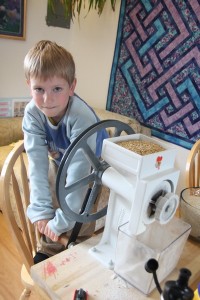But it’s a celebration, too:

Image courtesy of Wong Mei Teng via stock.xchng
The Lindorm Novel is once again making its rounds in the real world of real readers.
How did this finally happen? (You should ask.)
The last time I released LINDORM to betas was June 26, 2010.
(I know because I was so ecstatic about being done I had to try to dig up guilt at having no party ideas for my middle girl’s birthday.)
God provided so perfectly for that event that I felt its success as an extension of His pleasure in me, that I’d persisted in what he designed me to do.
That would be both momming AND writing.
Here was one glorious example of how I didn’t have to do everything, and God supplied for my deficiencies. *happy sigh*
She had a lovely, lovely 6th-birthday party with way more of what she wanted than if I’d put it together.
That was version 8.7.
Yesterday I released version 13.1, one paper copy and three kindle mailings. After Jay converts it to PDF, I have another four friends on the internets who will receive it for review. A couple more friends at church will get paper copies. This is the largest pool of beta readers I’ve yet had, so I’m excited, even though it is unknown how many will actually Finish & Respond.
Jay just started reading it this morning and came running out from wherever he was reading with a rushed, “You ready for feedback?”
And my skin crawled, but I said yes, and he said something really relevant and meaningful (translation: embarrassing to have someone else notice before me), and I reluctantly asked, “Should I correct that before you PDF and print it?”
He instantly went from intense to bland.
“It’s your book. Do whatever you want.”
GRRRR.
This is what I call emotional whiplash.
ETA: Jay clarified later– it wasn’t meant as emotional whiplash. There were more words than just that, and it was him challenging my response: Did I really want to change bits and pieces as feedback came in, or did I want to wait for the weight of everybody and make my decisions/revisions at that point.
It isn’t deadly, but sure as rain & taxes it’s disorienting.
This is what I experience when I get in (say) a stylistic or story-question debate with someone about a movie/book/television show, and it gets a little intense, diffuses, and then the person I was just as loggerheads with shrugs and says, It doesn’t matter.
It doesn’t matter?
What were we just arguing about then?!
And I’m reminded that some people really do argue recreationally
(Jay’s not one of them, thank God, but this exchange reminded me of similar, less peaceful interactions).
Now, I enjoy a good argument– if it’s clear, and I think I can win, and I think it’s worth the effort– but part of what makes it worth the effort is that I actually care about the thing we’re discussing.
Anyway.

Image courtesy of pixaio via stock.xchng
I proof-read the first 35 pages of LINDORM after I printed out the whole thing, and in the 2nd chapter I found a bunch of pronouns that needed correcting.
I tried to continue the read-through after Page 37, but didn’t get far. I was just tired.
Then I figured, you know, I’m not publishing-publishing now. I’m doubtless going to make corrections/revisions in response to my Betas’ responses. So enough with the line-editing. Put it away. Let the ashes fall where they will.
And that felt really good.
One of my efforts at present is to be content with less-than-perfect.
Not strictly to celebrate sloppy (I don’t see that as any sort of need), but to keep things moving by accepting limitations.
This novel is being released now because I let some stuff go.
The second part of the story, to be specific. The Huge Second Part that refused to be wrestled into submission or structure or anything like coherence within acceptable word-counts.
Version 13.1 is 74,000 words.
Compared to version 8.7, it stops at chapter 21 of 45. Version 8.7 was 88,000 words.
All along this journey I’ve had people tell me I needed to break up the story, that it was too big for one book. And I agreed, but I couldn’t give you two *whole* books out of this story, either.
“Whole” being defined as at least 65,000 words– and that seemed short anyway. I knew my genre, or the closest thing to it, and few of those books are tiny. I imagined the challenge it would be to connect with that type of reader when my book looked different from what was familiar.

Image courtesy of Verzon via stock.xchng
Revision #13 was going really well, and at some point I realized I was well past the natural break between the “set up” story (Modified Beauty & the Beast, where the Beauty is a single mom and the Beast is a dragon-sized serpent) and the *BIG* story of the second part.
I had already decided to indulge myself and “just see how the story flows” with word-count not a factor. With all the scenes left in.
I’ve also been reading (even re-reading!) a lot this year, and that added to the amalgam that has been my intense life over the last year. I saw things in this story I had only sensed before. I had words for feelings I’d never recognized.
And I put everything I could think of into my work.
The effectiveness of this new vision yet to be tested (figuratively biting my nails, waiting on reader responses), but my favorite addition to bulk/meaning in the story is the addition of non-story goals. Or, put a different way, Pre-Story Goals.
More on that tomorrow.
 This is the story of my ending up in a very unexpected and deep depression.
This is the story of my ending up in a very unexpected and deep depression.




 First, the bad news:
First, the bad news:










